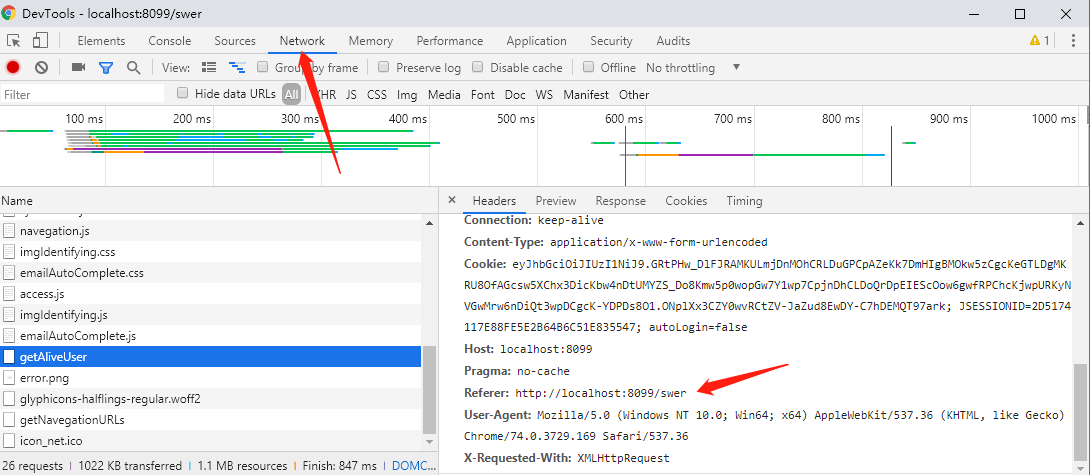基础概念
抽象数据类型(ADT)是一种数据类型,它定义了一组数据以及可以在这组数据上执行的操作,但隐藏了数据的具体存储方式和实现细节。在C语言中,抽象数据类型(ADT)是一种非常重要的概念,它允许程序员定义和操作自定义的数据结构,而无需关心其底层实现细节。通过ADT可以创建出既安全又高效的数据管理方案,为复杂问题的解决提供有力支持。
使用ADT的优点:
封装性:隐藏数据表示和实现细节,只暴露操作接口,提高了代码的安全性和可维护性。
复用性:ADT可以作为独立的模块进行开发和测试,方便在不同项目中复用。
抽象性:通过ADT,我们可以更关注于数据操作的逻辑,而不是数据的具体存储方式。
ADT由以下两部分组成:
数据表示:定义数据的存储结构,通常使用结构体来封装数据成员。
操作接口:定义可以在数据上执行的操作,如创建、销毁、访问、修改等,这些操作通过函数来实现。
基于链表的ADT实现数据封装
这里使用基于链表的ADT实现数据封装来进行展示,数据封装是一种把数据和操作数据的函数捆绑在一起的机制,在C语言中,可以通过结构体和函数来实现数据封装,结构体用于存储数据,而函数则用于操作这些数据。
操作步骤如下:
1.定义链表节点的结构体:包含数据域和指针域。
2.定义链表ADT的操作函数:如初始化链表、在链表末尾添加元素、清空链表等。
3.实现这些操作函数:通过函数来操作链表,隐藏链表的具体实现细节。
#include <stdio.h>
#include <stdlib.h>
// 定义链表节点的结构体
typedef struct ListNode {
int data;
struct ListNode* next;
} ListNode;
// 定义链表ADT的操作函数
typedef struct {
ListNode* head;
} List;
// 初始化链表
void initList(List* list) {
list->head = NULL;
}
// 在链表末尾添加一个元素
void appendToList(List* list, int value) {
ListNode* newNode = (ListNode*)malloc(sizeof(ListNode));
newNode->data = value;
newNode->next = NULL;
if (list->head == NULL) {
list->head = newNode;
} else {
ListNode* current = list->head;
while (current->next != NULL) {
current = current->next;
}
current->next = newNode;
}
}
// 清空链表
void clearList(List* list) {
ListNode* current = list->head;
while (current != NULL) {
ListNode* next = current->next;
free(current);
current = next;
}
list->head = NULL;
}
// 打印链表
void printList(List* list) {
ListNode* current = list->head;
while (current != NULL) {
printf("%d -> ", current->data);
current = current->next;
}
printf("NULL\n");
}
int main() {
List myList;
initList(&myList);
appendToList(&myList, 1);
appendToList(&myList, 2);
appendToList(&myList, 3);
printList(&myList);
clearList(&myList);
printList(&myList);
return 0;
}
运行后在终端显示以下内容

接口实现
接口是ADT与用户之间的桥梁。它规定了用户可以如何访问和操作ADT中的数据,而不涉及数据的内部表示。在C语言中,接口通常通过头文件(.h文件)来定义,其中包含了数据类型的声明和函数原型的声明。实现接口意味着为ADT定义具体的操作。这些操作在C语言中通过函数来实现。函数的定义通常放在源文件(.c文件)中,并且这些函数会操作ADT的内部数据。
这里通过定义一个栈的ADT来实现数据封装,并通过接口来访问栈的操作。
步骤如下:
定义栈的ADT:在头文件中声明栈的结构体和函数原型。
实现栈的操作:在源文件中定义栈的操作函数。
使用栈的ADT:在主程序中通过接口来操作栈。
先定义一个栈操作的头文件
// stack.h
#ifndef STACK_H
#define STACK_H
// 定义栈的ADT
typedef struct {
int* data;
int top;
int capacity;
} Stack;
// 栈的操作函数原型
void initStack(Stack* stack);
int isStackEmpty(Stack* stack);
void push(Stack* stack, int value);
int pop(Stack* stack);
int peek(Stack* stack);
void clearStack(Stack* stack);
#endif
在编写一个用来实现栈操作的C语言文件
// stack.h
#include <stdio.h>
#include <stdlib.h>
#include "stack.h"
// 栈的内部表示
struct Stack {
int* data;
int top;
int capacity;
};
// 初始化栈
void initStack(Stack* stack) {
stack->data = (int*)malloc(100 * sizeof(int));
stack->top = -1;
stack->capacity = 100;
}
// 检查栈是否为空
int isStackEmpty(Stack* stack) {
return stack->top == -1;
}
// 压栈
void push(Stack* stack, int value) {
if (stack->top < stack->capacity - 1) {
stack->data[++stack->top] = value;
} else {
// 如果栈满,输出提示
printf("被填满了\n");
}
}
// 出栈
int pop(Stack* stack) {
if (!isStackEmpty(stack)) {
return stack->data[stack->top--];
} else {
// 栈空,处理栈下溢,返回特殊值表示错误
return -1; // -1不是栈中的有效值
}
}
// 查看栈顶元素
int peek(Stack* stack) {
if (!isStackEmpty(stack)) {
return stack->data[stack->top];
} else {
return -1;
}
}
// 清空栈
void clearStack(Stack* stack) {
free(stack->data);
stack->top = -1;
stack->capacity = 0;
}
最后编写出主文件
// main.c
#include <stdio.h>
#include "stack.h"
int main() {
Stack myStack;
initStack(&myStack);
push(&myStack, 10);
push(&myStack, 20);
push(&myStack, 30);
printf("栈顶部的元素是: %d\n", peek(&myStack));
while (!isStackEmpty(&myStack)) {
printf("弹出的元素是: %d\n", pop(&myStack));
}
clearStack(&myStack);
return 0;
}
代码运行后在终端输出以下内容:

队列ADT
队列是一种先进先出(FIFO)的线性表,它只允许在表的一端进行插入(队尾),在另一端进行删除(队头),任务按照它们被添加到队列中的顺序被调度执行。
队列ADT的操作步骤如下:
入队(EnQueue):
将一个元素添加到队列的末尾(队尾)。
这是队列的核心操作之一,用于在队列中插入新元素。
出队(DeQueue):
从队列的开头(队头)移除一个元素,并返回该元素的值。
出队操作遵循先进先出(FIFO)的原则,即最先入队的元素最先被移除。
判空(QueueEmpty):
检查队列是否为空。
这是一个常用的辅助操作,用于确定队列中是否还有元素。
获取队头元素(GetHead 或 Front):
返回队列开头元素的值,但不移除该元素。
这允许用户查看队列的当前状态,而不改变队列的内容。
队列长度(QueueLength):
返回队列中元素的数量。
这个操作对于需要知道队列大小的情况非常有用。
清空队列(ClearQueue):
移除队列中的所有元素,使队列变为空。
这在需要重置队列或释放内存时很有用。
销毁队列(DestroyQueue):
释放队列所占用的所有资源,包括内存。
这是在队列不再需要时进行的清理操作。
以下代码运行后程序会提示用户输入队列元素的数量,然后输入具体的元素。接着程序会遍历队列、出队一个元素、获取队头元素、显示队列长度,并判断队列是否为空。最后销毁队列。
#include <stdio.h>
#include <stdlib.h>
#include <stdbool.h>
typedef int QElemType;
typedef struct QNode {
QElemType data;
struct QNode* next;
} QNode, *QueuePtr;
typedef struct {
QueuePtr front;
QueuePtr rear;
} LinkQueue;
// 初始化队列
bool InitQueue(LinkQueue* q) {
if (!q) {
printf("队列不存在!\n");
return false;
}
q->front = q->rear = (QueuePtr)malloc(sizeof(QNode));
if (!q->front) {
printf("内存分配失败!\n");
return false;
}
q->front->next = NULL;
return true;
}
// 销毁队列
bool DestroyQueue(LinkQueue* queue) {
if (!queue) {
printf("队列不存在!\n");
return false;
}
while (queue->front != NULL) {
queue->rear = queue->front->next;
free(queue->front);
queue->front = queue->rear;
}
return true;
}
// 清空队列
bool ClearQueue(LinkQueue* q) {
if (!q) {
printf("队列不存在!\n");
return false;
}
QueuePtr p = q->front->next, tmp;
while (p) {
tmp = p->next;
free(p);
p = tmp;
}
q->front = q->rear;
return true;
}
// 判断队列是否为空
bool QueueEmpty(LinkQueue q) {
if (!&q) {
printf("空队列!\n");
return false;
}
if (q.front == q.rear) {
return true;
}
return false;
}
// 插入元素e为q的新队尾元素
bool EnQueue(LinkQueue* q, QElemType e) {
QueuePtr p = (QueuePtr)malloc(sizeof(QNode));
if (!p) {
printf("内存分配失败!\n");
return false;
}
p->data = e;
p->next = NULL;
q->rear->next = p;
q->rear = p;
return true;
}
// 出队
bool DeQueue(LinkQueue* q, QElemType* e) {
if (!q) {
printf("队列不存在!\n");
return false;
}
if (QueueEmpty(*q)) {
printf("空队列!\n");
return false;
}
QueuePtr p = q->front->next;
*e = p->data;
q->front->next = p->next;
if (q->front == q->rear) {
q->rear = q->front;
}
free(p);
return true;
}
// 获取队首元素
bool GetHead(LinkQueue q, QElemType* e) {
if (!(&q)) {
printf("队列不存在!\n");
return false;
}
if (QueueEmpty(q)) {
printf("空队列!\n");
return false;
}
*e = q.front->next->data;
return true;
}
// 队列长度
int QueueLength(LinkQueue q) {
if (!&q) {
printf("队列不存在!\n");
return 0;
}
int len = 0;
QueuePtr p = q.front->next;
while (p) {
len++;
p = p->next;
}
return len;
}
// 遍历队列
void QueueTraverse(LinkQueue q) {
if (!(&q)) {
printf("队列不存在!\n");
return;
}
if (QueueEmpty(q)) {
printf("队列为空!\n");
return;
}
QueuePtr p = q.front->next;
while (p) {
printf("%d ", p->data);
p = p->next;
}
printf("\n");
}
int main() {
LinkQueue que;
QElemType data;
int n;
if (!InitQueue(&que)) {
return 1;
}
printf("输入队列元素数量:\n");
scanf("%d", &n);
printf("输入队列中元素:\n");
while (n--) {
scanf("%d", &data);
EnQueue(&que, data);
}
printf("遍历队列:\n");
QueueTraverse(que);
if (DeQueue(&que, &data)) {
printf("出队元素: %d\n", data);
}
if (GetHead(que, &data)) {
printf("队头元素: %d\n", data);
}
printf("队列长度: %d\n", QueueLength(que));
if (QueueEmpty(que)) {
printf("队列为空!\n");
} else {
printf("队列不为空!\n");
}
DestroyQueue(&que);
return 0;
}
代码运行后显示:





![[Redis#2] 定义 | 使用场景 | 安装教程 | 快!](https://img-blog.csdnimg.cn/img_convert/5a3e88ff63655cf9a558ede00205c199.png)














